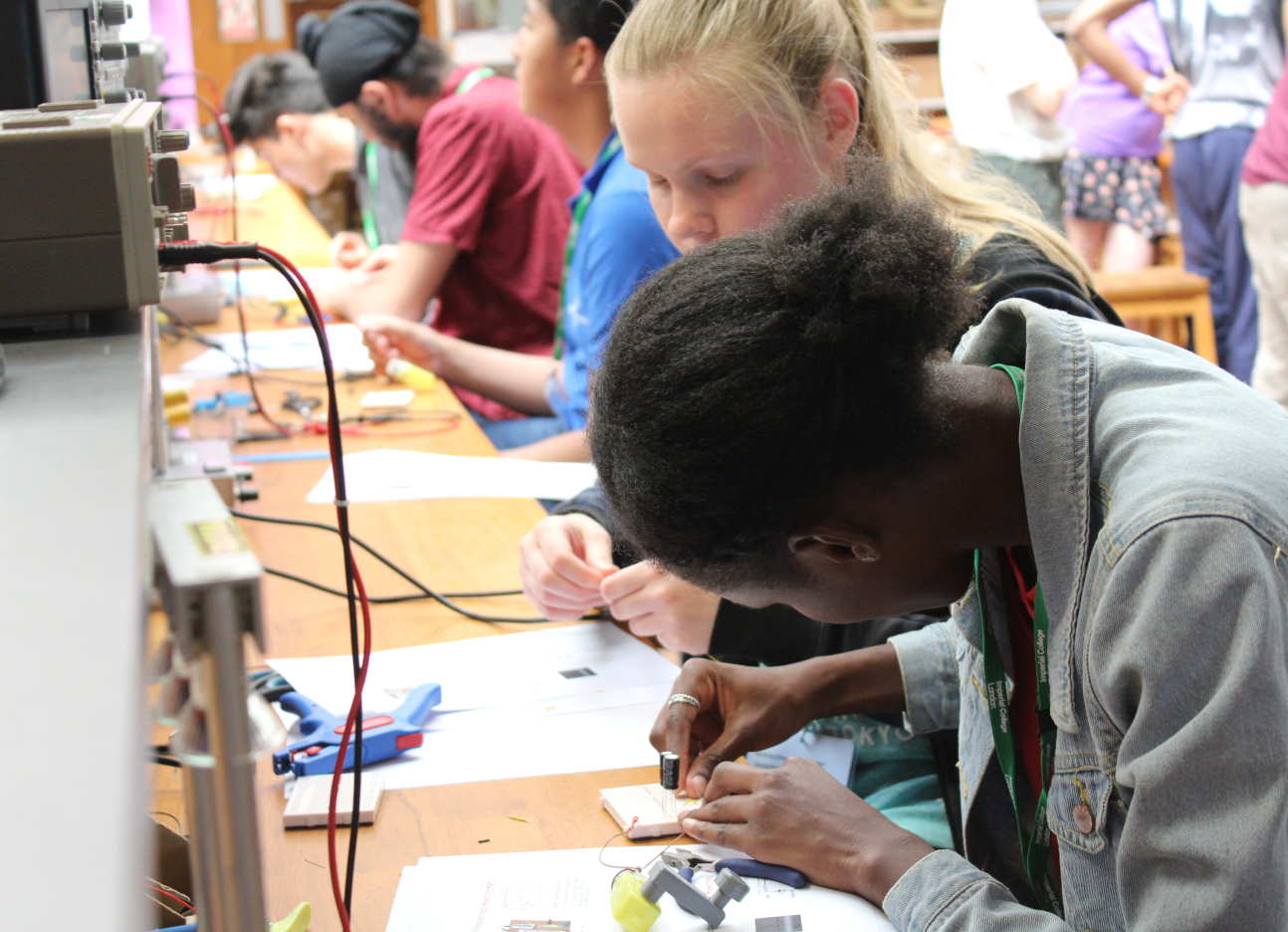

Cracking codes, implanting chips in brains and future power systems....
These are just some of the aspects of Electrical and Electronic Engineering encountered by students on the EEE-stream of Outreach’s Year 12 Work Experience programme, and the Sutton Trust Summer School.
Both programmes spent a day alongside students attending programmes in other departments learning about science communication. 12 students joined the Department for a three-day introduction to electrical engineering.
The students learnt of the importance of mathematics in electrical engineering and how engineers put maths into practice. Dr Dan Nucinkis gave a lecture on the maths underpinning the galvanic response decision maker toy that they had made in the electric laboratory.

Mr Thomas Briggs from Bletchley Park Trust taught them how to crack codes, and how an Enigma machine was constructed and worked.

On the Work Experience programme students discovered how mechanical and electrical engineering intersect with a talk by Dr Simos Evangelou on mechatronic suspension. There were talks on control (Professor Alessandro Astolfi) and the future of power systems (Dr Fei Teng). Mrs Esther Perea introduced them to the wider importance of engineering design, while Dr Christos Papavassiliou showed them how to identify news stories based around fake physics such as flap energy.
The Sutton Trust students were introduced to the field of communications with talks from Professor Kin Leung on developments in wireless communications over the years, from Dr Eric Kerrigan on drone communication, and from Professor Eric Yeatman on how far the information age can go. They also had talks on programming (Dr John Wickerson) and FPGAs (Dr David Thomas) which gave an overview of how computer systems work and communicate.

The students also visited our researchers in Communications and Signal Processing research group where the students they spoke to researchers working on signal processing in wearable technology; the Control and Power group where they experienced the difference between human and computer control of a crane, and learnt about power systems and the role of a data scientist, and to Optical and Semiconductor Devices where there were shown a microseisometer that is part of the Mars Insight Mission.
Both streams had talks microchips and the brain with an overview of cochlear implants and an in-depth description of the work the CBit team is doing on Brain Gate – a brain-computer interface to send movement commands from the brain to a paralysed limb or prosthetic limb (Dr Tim Constandinou and Mr Dorian Haci).

Dr Oleksiy Sydoruk gave a lecture on energy conversion which was followed by a hands-on session in the lab converting motion to energy and back again through powering LEDs to read invisible messages, and converting light to sound by building a speaker cone using paper and magnets.

On the final day the students rejoined those on the other streams to give presentations to staff and mentors from the Outreach team, staff from the academic departments, and family members.


Article text (excluding photos or graphics) © Imperial College London.
Photos and graphics subject to third party copyright used with permission or © Imperial College London.
Reporter
Kay Hancox
Department of Electrical and Electronic Engineering

Contact details
Tel: +44 (0)20 7594 6166
Email: k.hancox@imperial.ac.uk
Show all stories by this author



